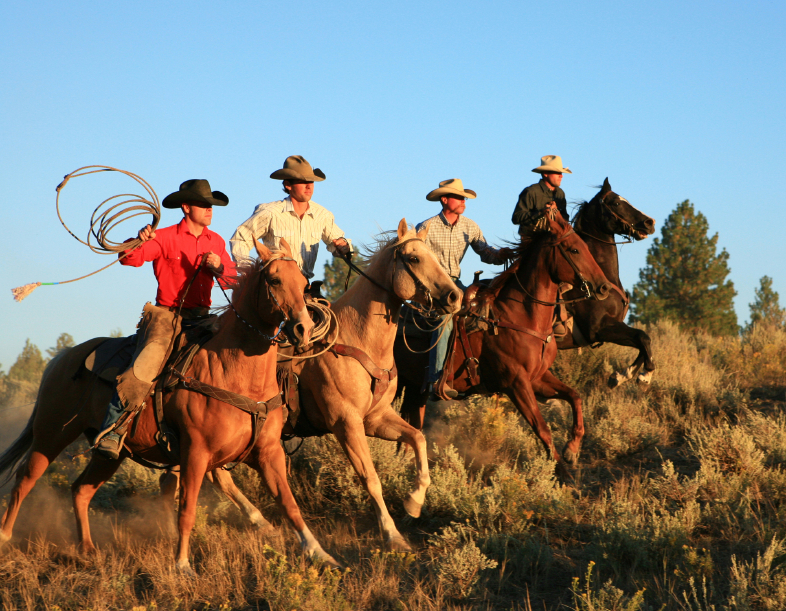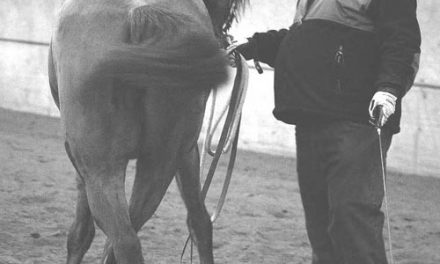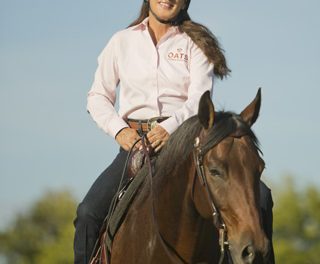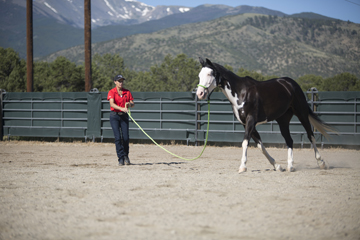 Whether you compete in trail classes or not, trail obstacle courses are a great way to get your horse used to a lot of things and have fun. In this month’s article, we’re going to review nine common trail obstacles and how I like to see them approached when I am judging a trail class. These are my personal opinions on how I like to see things done. Keep in mind that each judge will have a slightly different view on things.
Whether you compete in trail classes or not, trail obstacle courses are a great way to get your horse used to a lot of things and have fun. In this month’s article, we’re going to review nine common trail obstacles and how I like to see them approached when I am judging a trail class. These are my personal opinions on how I like to see things done. Keep in mind that each judge will have a slightly different view on things.
The first trail obstacle we’ll cover is logs. This usually consists of multiple logs one after the other. Your horse is supposed to step over the logs calmly and quietly. I like to see a horse hesitate slightly before each log to show he is paying attention and is aware that there is something in front of him. He should step over each log willingly and carefully, staying flexed in the poll the entire time. I don’t like to see a horse rushing over the logs or jumping them. I also don’t like to see a horse walking over the logs with his nose stuck out and braced against the bridle.
Next, we’ll cover the back up box. This obstacle is a rectangular box that is open on one of the narrow ends. Your goal is to walk your horse in to the box, stop, and back him out, all without stepping out of the box or hitting the sides. I like to see a horse stay soft and flexed in the poll throughout the exercise, and a rider who sits up straight and tall, looking ahead. I don’t like to see a rider who looks down and back as their horse is backing up. This throws your horse off balance and makes him more likely to step out of the box, and makes the rider seem less confident in their horse. I also don’t like to see a horse step out of the far end of the box before halting and backing up. The horse should back up smoothly, without the rider pulling or jerking on the reins.
Our third obstacle is the bridge. This can be over water but is frequently over dry ground. Your horse should step calmly on to the bridge, take his time walking over, and step off calmly and quietly. I don’t like to see a horse stepping off the side of the bridge or rushing to get on and off the bridge. Be sure not to look off your horse’s side to see where the bridge is under you as that will throw your horse off balance and can cause him to step off the side. I also don’t like to see a rider kick their horse at the last minute when they are just stepping on to the bridge. That tells me that they are not sure if their horse is going to quit, and tends to make the horse rush on to the bridge.
Our fourth obstacle is a large tire full of fine gravel. This duplicates a spot in the trail where your horse needs to step up on to something. As with the logs, I like to see a horse hesitate slightly before stepping up on to the tire. That lets me know he is aware of what he is doing. You should halt your horse with all four feet on top of the tire, then ask him to step down. He should do all this calmly and quietly. I don’t like to see a horse charge up to the tire, rush over the top, and step down without halting. The halt on top of the tire shows me, as a judge, that the rider has complete control of their horse.
Our fifth obstacle is the side pass poles. This is just a pole on the ground, and your horse needs to side pass the length of it down and back. I want to see a horse side pass calmly and correctly, with his body even and square. He should be flexed in the poll, and his legs should be crossing over as he moves sideways, not just moving over to meet each other. The rider should be sitting straight and confidently in the saddle.
Our sixth obstacle is the compass. This is a pole or a two by four, about 12 feet long, with a loop of rope through one end that can be used as a handle. Both ends of the pole should be sitting on barrels. Your job is to ride up to one end of the pole, pick it up by the handle, and ride your horse in an even circle so that the other end of the pole stays on the second barrel. You ride a complete circle, and set the pole back on the barrel where you picked it up in the first place. I like to see the horse maintain a nice even arc throughout the entire circle, and maintain an even speed. The other end of the pole should not move on the barrel. The rider should sit straight, without leaning in, and should not drop their end of the pole or pull the opposite end of the pole off the barrel.
Our seventh obstacle is the tire drag. You take a rope with a tire attached, dally (wrap) the rope around your saddle horn, and drag the tire to a set location. I look for a rider to dally the rope correctly, with their thumb up, and to hold their hand correctly near their belt buckle. In my opinion, the rider should keep an eye on the object they are dragging. When you go to leave the drag at the drop location, coil the rope neatly and hang it on the designated hook. Before leaving the drag, I like the rider to stop their horse, face the tire, and back up a few steps. This shows me that the horse is aware of the object they are dragging. You will lose points if your horse is afraid of the dragging object, or if the rider drops the rope.
Our eighth obstacle is the rain coat. I like to see the rider brush the coat over the horse’s neck and hind end. The horse should not be afraid of the rain coat. It is very important to me that the rider NOT drop both reins and swing the rain coat over their head to put it on. Doing it this way is a huge safety hazard. If your horse spooked, bolted, or bucked when both your arms were halfway in to the coat above your head, you would have no way of stopping him. The rider should take the reins on one hand, put the other arm though the coat, then switch the reins to the other hand and put that arm in to the coat. Repeat this process when taking the coat off.
Our ninth obstacle is the gate. It is very important that you keep a hand on the gate from the time you open it to the time you close it. There are two ways of opening the gate. You can either push the gate away from you, ride through it, and back your horse up to shut it, or you can pull the gate towards you, ride through, and side pass to close it. Either way is acceptable. I suggest you pick the way that your horse seems more comfortable and stick with that. Your horse should be quiet through this entire process, and should not be afraid of the gate.
Generally you will get points added if you can complete all these exercises riding with only one hand on the reins.
To sum it up, here are the key points that I look for in a competitive trail horse and rider:
The horse should be calm, and thinking about what he is doing.
The rider should be focused, sitting straight and upright and looking ahead.
I like to see control both in the rider’s body position and in their communication with their horse.
The rider should demonstrate a conscious effort to maintain the highest level of safety for themselves and their horse at all times.
Make up your own trail courses at home, practice, and have a good time. Until next time, may God bless the trails you ride.
For more information on Ken McNabb’s programs call us at 307-645-3149 or go to www.kenmcnabb.com.





